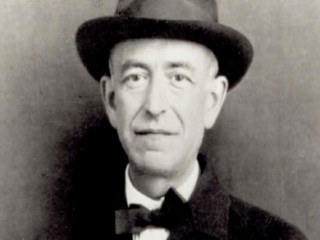
Manuel De Falla biography
Date of birth : 1876-11-23
Date of death : 1946-11-14
Birthplace : Cadiz, Spain
Nationality : Spanish
Category : Famous Figures
Last modified : 2011-11-21
Credited as : piano composer, concert pianist, In Siete canciones populares espanoles
The Spanish composer Manuel de Falla infused his compositions with the distinctive idioms of native folk song and dance to create music on nationalistic lines.
Manuel de Falla was born on Nov. 23, 1876, in Cadiz into a family that had a lively interest in music. His mother gave him piano lessons, and from local musicians he had instruction in harmony, counterpoint, and solfeggio. At the age of 20 he enrolled in the Madrid Conservatory and earned the school's highest awards in piano. More important to him, though, since he did not want to be a concert pianist, was his composition study with Felipe Pedrell. Working with that ardent nationalist for 3 years, Falla entered deeply into the study of his country's folk music and made his goal the development of an expressive mode of composition rooted in Spanish culture.
In Siete canciones populares espanoles (1914) Falla took folk songs whole and put them in simple but imaginative settings; generally, however, he freely used only certain aspects of folk originals to give a Spanish quality to his compositions. Examples occur in his first important work, the two-act opera La vida breve (1905), which calls up memories of Giacomo Puccini and Richard Wagner but makes its best effects from the employment of two varieties of folk music native to Andalusia: lively flamenco dance rhythms and melodic patterns of the passionate, sometimes melancholic, type of song known as the cante hondo. These two elements also served Falla in his work through 1919, which includes music written in France as well as at home.
Living in Paris from 1907 to 1914, Falla came under the influence of Claude Debussy, whose impressionistic techniques are plainly audible in Quatres pieces espagnoles (1908) for piano and Noches en los jardines de Espana (1916) for piano and orchestra. The image of Spain shines through, though, in their thematic material and in Falla's evocation of guitar qualities in his treatment of both piano and orchestra. The same may be said of the music that closed what is commonly called his Andalusian period: El amor brujo (1915), a ballet containing the well-known "Ritual Fire Dance;" El sombrero de tres picos (1919), another ballet; and his single large piece for solo piano, Fantasia betica (1919).
The balance of Falla's production is less locally centered, less picturesque, but no less Spanish in impulse. Its high spots are a delightful puppet opera, El retablo de Maese Pedro (1923), based on a scene from Cervantes' Don Quixote, and a rather severe-sounding concerto in neoclassic vein for harpsichord and chamber orchestra (1926). His last work, an enormous cantata entitled La Atlantida, which occupied him from 1928 until his death, was left unfinished.
Falla died on Nov. 14, 1946, in Argentina, where he had moved in 1939 after deciding that he could no longer adapt himself to the Franco regime. Long before then he had been accepted as the foremost creative musician of his time in Spain. Present-day criticism is less favorable, viewing his music as expressively strong but limited in range and technical originality.
















